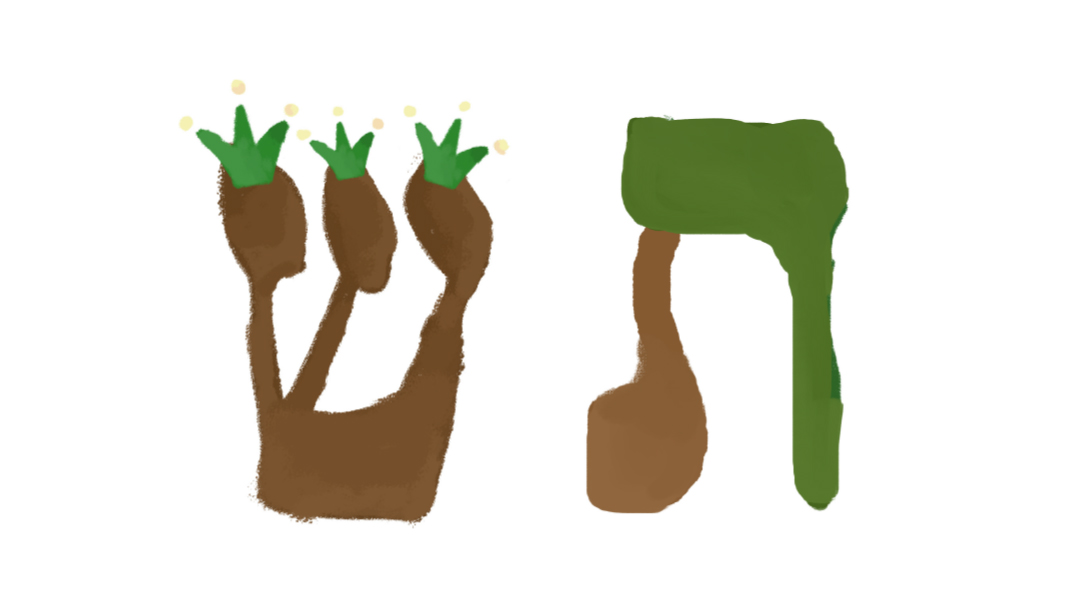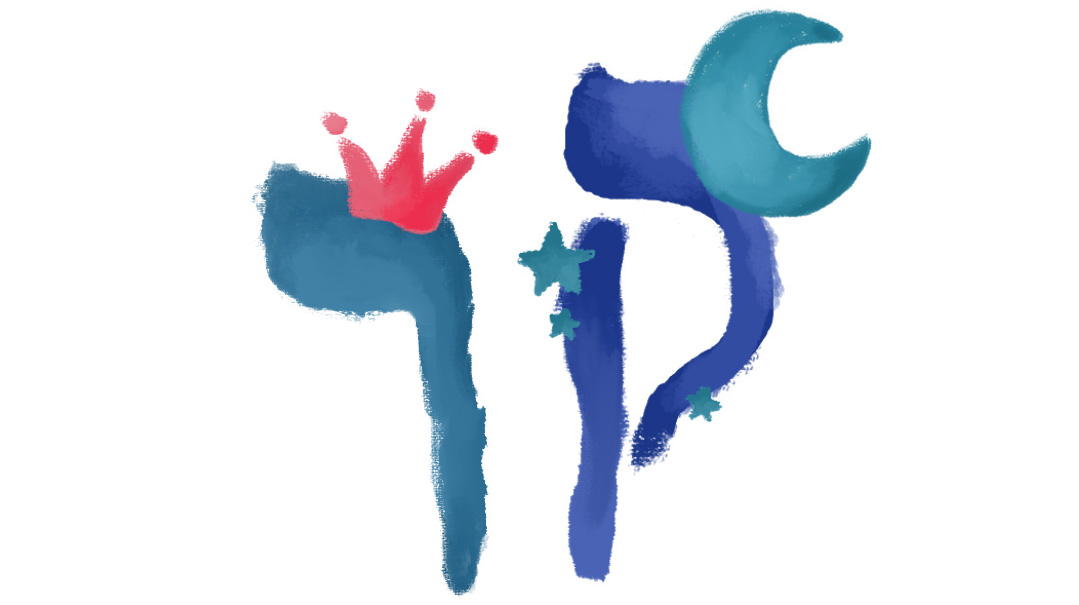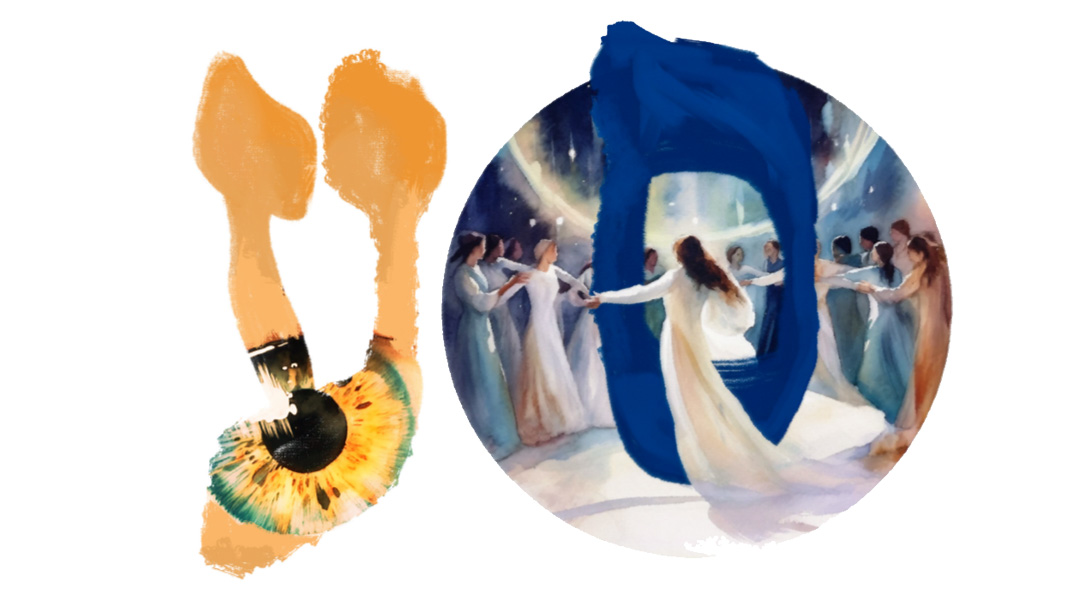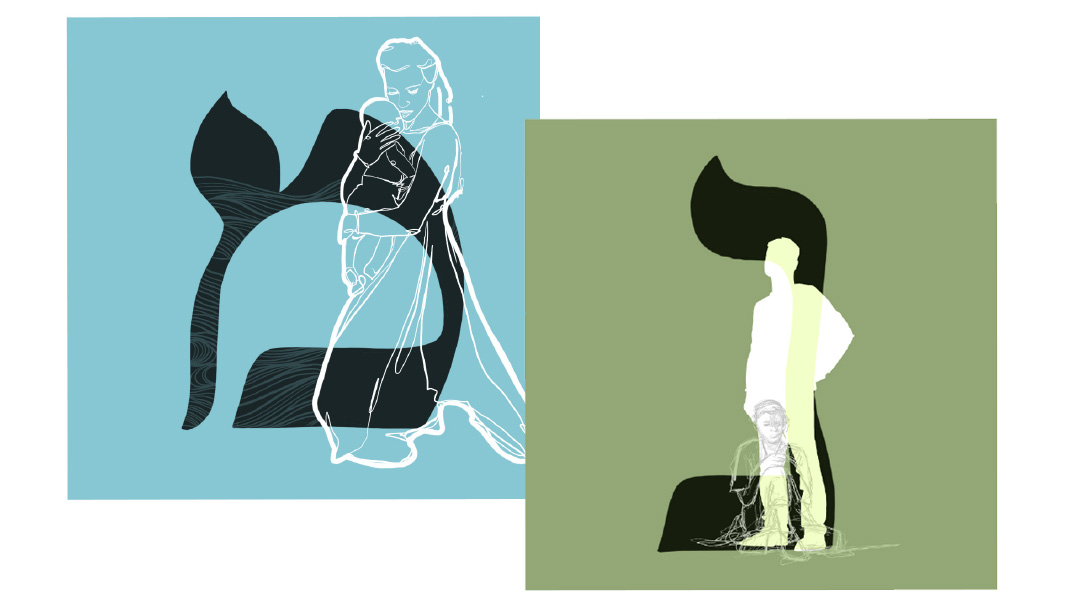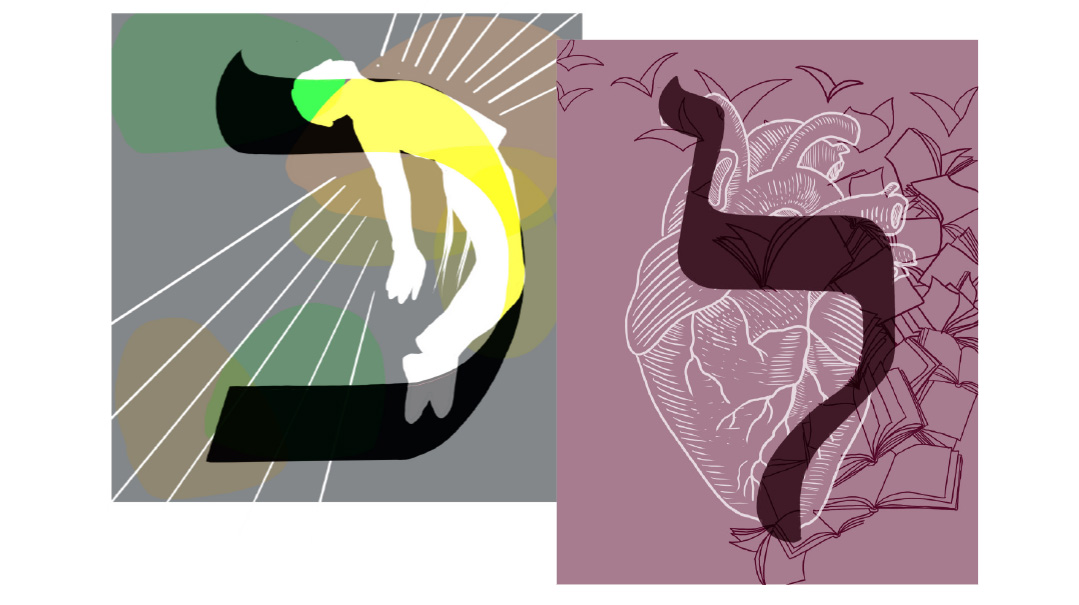Alef-Beis
| November 22, 2022It seems so simple, and yet Chazal tell us that the concept of yichud Hashem is something beyond human comprehension
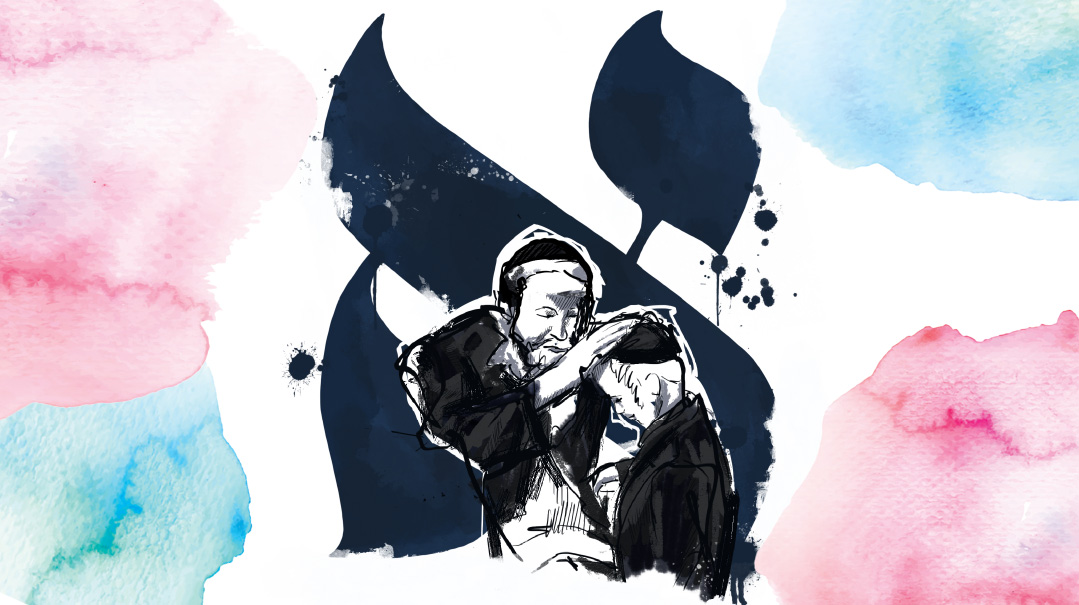
Alef
Name: Alef
Aluf — a chief or master (Midrash Osios D’Rabi Akiva)
Gematria: One
We also see the value one in the name of alef, spelled alef + lamed + fei = 1 + 30 + 80 = 111
Shape: two yuds (one regular, one inverted) and a vav connecting them
Middah: Emunah
Who knows one? The youngest child can tell you that One is Hashem, the Master of the World. It seems so simple, and yet Chazal tell us that the concept of yichud Hashem is something beyond human comprehension. How are we to relate to the idea of One?
At the time of creation, there was only Hashem — one, with no division or distinction of parts. But like a single ray of white light refracted through a prism into multiple channels of color, Hashem manifests in our physical world in various, even conflicting ways. And while we know intellectually that everything comes from Him, the reality we experience is multifaceted.
I can feel grateful for my job and at the same time be frustrated with it. At a funeral, I can recognize a life well lived while mourning the loss of that individual. Marriage is a blessing and an avodah. Wars lead to death and to development. Within the conglomerate of emotions, at any given moment I need to understand that the good and the bad — it all comes from the same One Source. That means that somehow it’s all good — not just the part I’m grateful for, but even the parts I find difficult to attribute to a Loving Creator.
I need to find the purpose in the pain, the simchah in the disappointment, the brachos in the challenges. How does Hashem want me to react to this? What lesson can I learn? Is there a reason I’m here? This perspective is touching upon yichud Hashem — belief that it’s all One, it’s all Hashem.
The shape of the alef — two yuds with a vav connecting them — contains within it a numerical value of 26, the same value of Hashem’s name Havayah. This is the name that indicates that His existence is infinite — He knows everything from beginning to end, down to every last detail. (Midrash Lekach Tov, Bereishis 2) It’s also a name we never pronounce as it’s written, demonstrating that such a concept is above our comprehension. The Ohr HaChaim Hakadosh (Shemos 20:2) explains that the Aseres Hadibros begin with this name to state the founding principle of our belief: “Anochi Hashem” — I am Hashem Who knows what was in the past and what will be for eternity.
There are things that come our way that we don’t like or understand, but there is one truth we can always fall back on — that Hashem understands us completely in our past, present and future, so every challenge is something we need.
This job didn’t work out? That recipe flopped? The best teacher in the school left right before the year began, leaving my kid with a sub? I can’t know why it has to be this way, but because I believe in Hashem, I know it has to be this way.
The vav that connects the two yuds reminds us of this, to view the reality of this world through a higher perspective. In doing so, we transcend divisions and distinctions — we see One God Who is good.
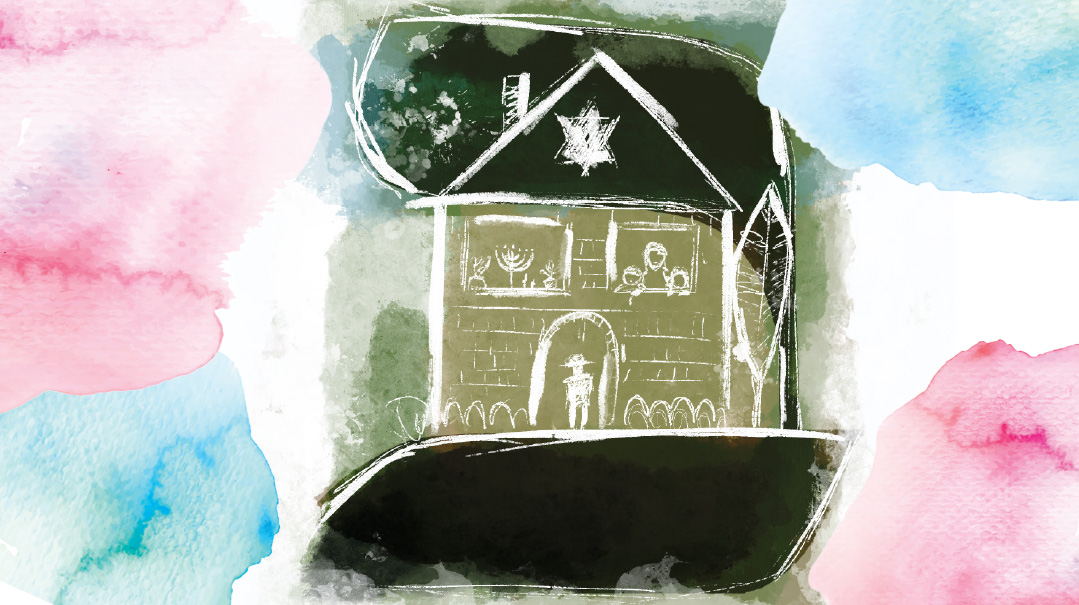
Beis
Name: Beis
Bayis — a house
Gematria: Two
Shape: Two horizontal lines with a vertical line connecting them on one side.
Middah: Bitachon
“Bereishis”— it all began with a beis. Why did the Torah begin with a beis, and not with the obvious choice — alef? Alef is a letter reflecting arur — a curse. for it is limited and can’t be multiplied. Beis is the letter of brachah, of growth and expansion. It’s from this place that the world began. (Bereishis Rabbah 1:10)
The root of the word brachah is “barach,” and is made up of letters that show duality: beis (2), reish (200), and chaf (20). This is no coincidence — when multiple parts work in unison, that fosters brachah.
Creation was when one became two, when division came into existence. Light and dark, night and day, land and sea. The contrasting parts of this world each play a unique role and are meant to work together, not against each other. We see this built into the very fabric of nature: protons and electrons have opposite charges, and together they make up the elements of the physical world. As we see the natural world do this automatically, we understand that we have a mission to do the same.
Male and female unite and utilize their differences to build a home. Coworkers fulfill different jobs to form a successful company. The differences create friction, struggle — but when used effectively, they also create movement and balance. When parts work harmoniously, that is where we can sense the unity of Hashem; that’s where we get a glimpse of the True Source.
While we know Hashem is Singular, we don’t understand that. Multiplicity is what allows us to see manifestations of Hashem in a way we can understand — not as an infinite One, but in what appear to be individual traits. This was the goal of creation: to create a “bayis,” a home for the expression of Hashem (Midrash Tanchuma, Naso 16). And while the quintessential home on Earth is the Beis Hamikdash, it’s also the role of every Jewish home to be a place where the reality of Hashem is apparent, and where raw potential is actualized.
A home is a place that takes an abstract wish and turns it into a concrete action. A person can desire to do chesed, but the home is where that happens. You can strive to create an everlasting impact on the world, and a home is where you’ll raise the next generation. In the same vein, every person is a bayis, with the potential to bring Hashem into this world through their mitzvos.
If alef is emunah, beis is the expression and practical application of emunah — that which we call bitachon (which incidentally starts with a beis).
I can say I “believe” everything will work out fine, I can preface my plans with “b’ezras Hashem,” but how do I put that into practice? When things get tough, do I stress out or am I in a state of menuchas hanefesh because I know that ultimately it’s up to Hashem? If this doesn’t go as planned, do I accept that Hashem has a different goal for me? Emunah is “up there,” bitachon is bringing it “down here” — into the reality of this world.
There’s a vertical line connecting the upper and lower lines of the beis, but on one side only. We can either connect our experiences to a higher reality, or we can ignore it. That’s where our bechirah lies (also a beis!). We see that beis is closed on the right and open on the left. As the first letter in Torah, this tells us that what came “before” beis (to the right) is closed to us, it’s beyond our intellect, and we aren’t meant to understand it (Bereishis Rabbah). All we can see is what we have to the left of beis — creation, this world, the circumstances life throws at us. How will we view those situations? With emunah and bitachon? Will we connect them to Hashem? That’s up to each of us.
Alef-Beis Connection
While alef is the One, the perfection, the source, the emunah — it’s in the realm of the abstract. Our purpose here on Earth is to take the abstract and bring it to life, to turn emunah into bitachon, ideas into action, and goals into accomplishments.
Mindel Kassorla is a teacher, graphic designer, shadchan, and Mishpacha contributor. Her older sister, Cindy Landesman, is the head mechaneches of Shearim Torah High School for girls in Phoenix, AZ and the director of its Shaarei Bina adult women's education program.
(Originally featured in Family First, Issue 819)
Oops! We could not locate your form.

